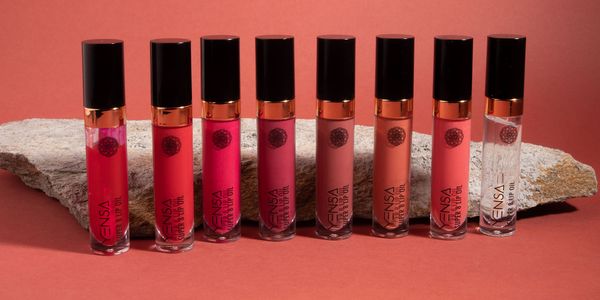Why Direct Partnerships Are the Key to Reaching New Audiences
You are the company you keep. When it comes to branding and partnerships, this age-old adage couldn’t be more on the nose. In today’s densely-populated marketing landscape, every brand faces the tough task of building a brand identity and unique positioning that set it apart from competitors. However, in an era when brand partnerships present one of the most effective methods of growth, brand identity has become as much a product of brand association as it is a product of each brand’s independent history and values.
Take, for example, the attempted partnership between Neiman Marcus and Target back in 2012. The collaboration floundered when loyal customers of Neiman Marcus felt that the high-low play went against the high-end retailer’s core identity. Meanwhile, Target shoppers were offered a collection of higher-than-usually-priced merchandise that wasn’t all that enticing to them. In short, it was a partnership gone miserably wrong thanks to vision misalignment.
On the other hand, when Buzzfeed launched a co-branded campaign with Best Friends Animal Society, the results were incredibly positive. In the campaign, the animal welfare organization worked with the content site to create a piece of content — “We Interviewed Emma Watson While She Played With Kittens And It Was Absolutely Adorable” — that at once garnered high pageviews for Buzzfeed from its readership of over 200 million and simultaneously drew attention to an important cause: animal adoption. All in all, the campaign ultimately proved to be a win-win on both sides.
All of that being said, it goes without saying that finding the right brands to work with is critical. The wrong collaboration can break your customer’s trust and result in a lower ROI, while the right partnership can pay off in a multitude of ways.
When it comes to creating partnerships or finding ways to reach fresh audiences, what’s the best way to go about it? Most commonly, the tendency has been to opt for programmatic buying, which offers a simple, manageable means of having your ad placed in front of a relevant audience. The idea is that you get targeted advertising at scale, without bandwidth-draining effort. Great, right? Well, not quite.
While programmatic buying does offer a relatively easy-to-manage avenue for targeted advertising, it’s hardly without its downfalls. The biggest caveat? Control. When a brand depends heavily on programmatic advertising, there’s a level of blind trust that comes into play. Brands ultimately put their faith in media agencies that often operate with little (if any) transparency, whether that’s in regards to ad placement, ad spend, etc. One result of this is that brands can’t necessarily control where their ads are appearing, or what brands they might become associated with as a result, and this can spell disaster for brand identity.
To that end, direct partnerships — which bring ad-buying back in-house and give brands control over whom they choose to associate themselves with — are a clear solution. Unfortunately, just because they’re a clear solution doesn’t necessarily mean they’re always an easy solution.
Despite their myriad benefits, direct partnerships pose their own host of complexities and risks that can make them tough to take on for brands.
Finding Partners
For starters, there’s the issue of just finding the right brands to partner with. Between identifying compatible brands, reaching out to and creating a relationship with those brands, agreeing to enter into a partnership, and negotiating partnership terms, it takes a lot of time and legwork to initiate a direct partnership; time that young brands or overextended teams don’t always have. And even if a brand attempts to simplify the process by tapping into previous relationships as opposed to cold contacting new brands for direct partnerships, this poses the limitation of a having a relatively small scope of potential brands to work with.
Measuring Performance
Then there’s the issue of measuring the performance of a direct partnership, let alone guaranteeing its success. Quite often, the terms of direct partnerships are agreed upon on a CPM basis, where the cost of an ad is based on impressions. The issue with that of course is that there’s always a risk involved because impressions don’t necessarily equal conversions. And in the case of tracking impressions, this may call for the implementation of unique tracking pixels which translates into an increased development time and can result in questionable accuracy, at best.
Scalability
Last but not least, the complex nature of building a direct partnership (even if your brand has gone through it once) makes it difficult to replicate. This, in turn, makes scalability a major issue, since it’s often unlikely that a brand can commit the kind of time and resources necessary to building direct partnerships on an ongoing basis.
Given these challenges, brands may find themselves at a crossroads. On the one hand, they want the ease and scalability that comes with programmatic ad buying. On the other, they want the control and safety for brand image that comes with direct partnerships.
Luckily, the benefits of each do not need to be mutually exclusive.
As direct partnerships become more instrumental in strong brand strategy, this opens up a need for tools and resources that brands can use to streamline that process; a need that’s being met by new technologies and platforms that aim to simplify direct partnerships and make them as mutually beneficial for all brands involved as possible.
It used to be that partnership marketing was the future. But as the marketing landscape continues to progress at a faster rate than ever, it now appears that the future has arrived, and having a strong partnership strategy has never been more crucial to keeping brands relevant and growing.
To that end, there’s no better way for brands looking to maintain their creative agency and their brand identity while engaging in co-branding than through direct partnerships — so long as they’re keeping you in good company.




